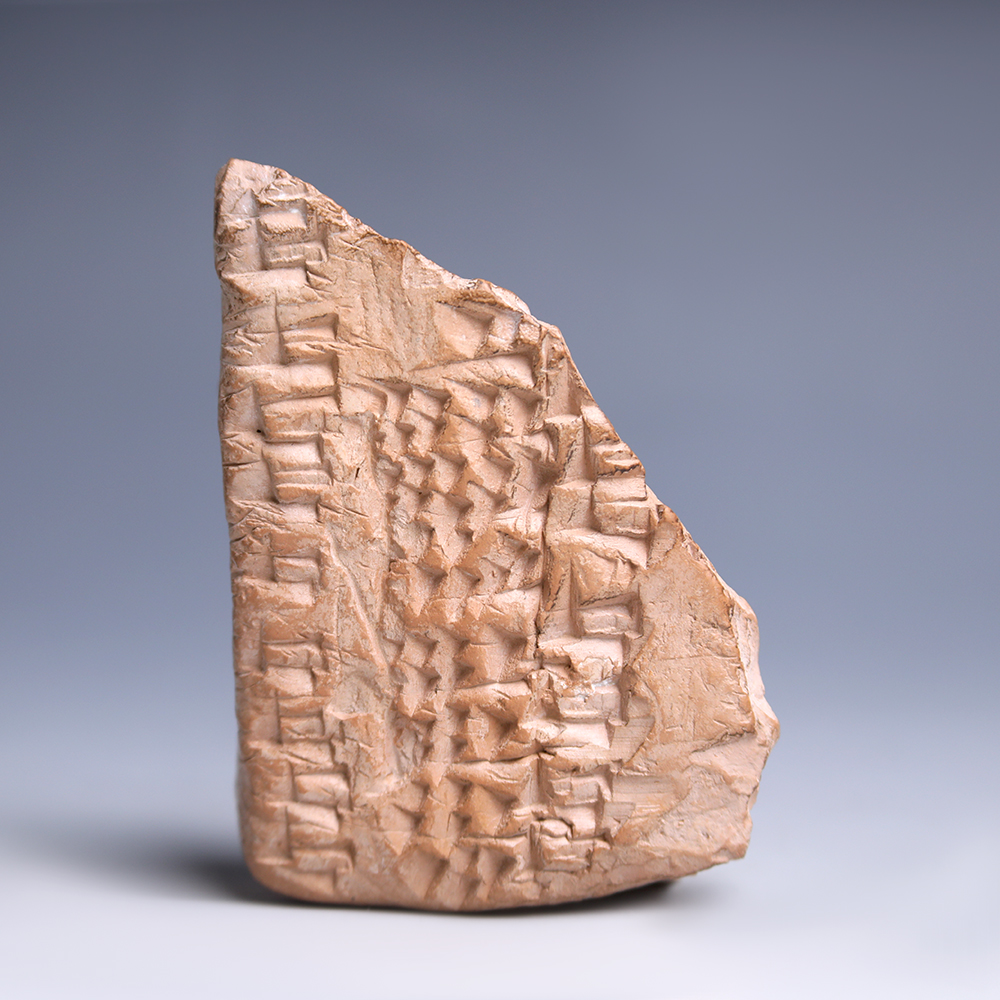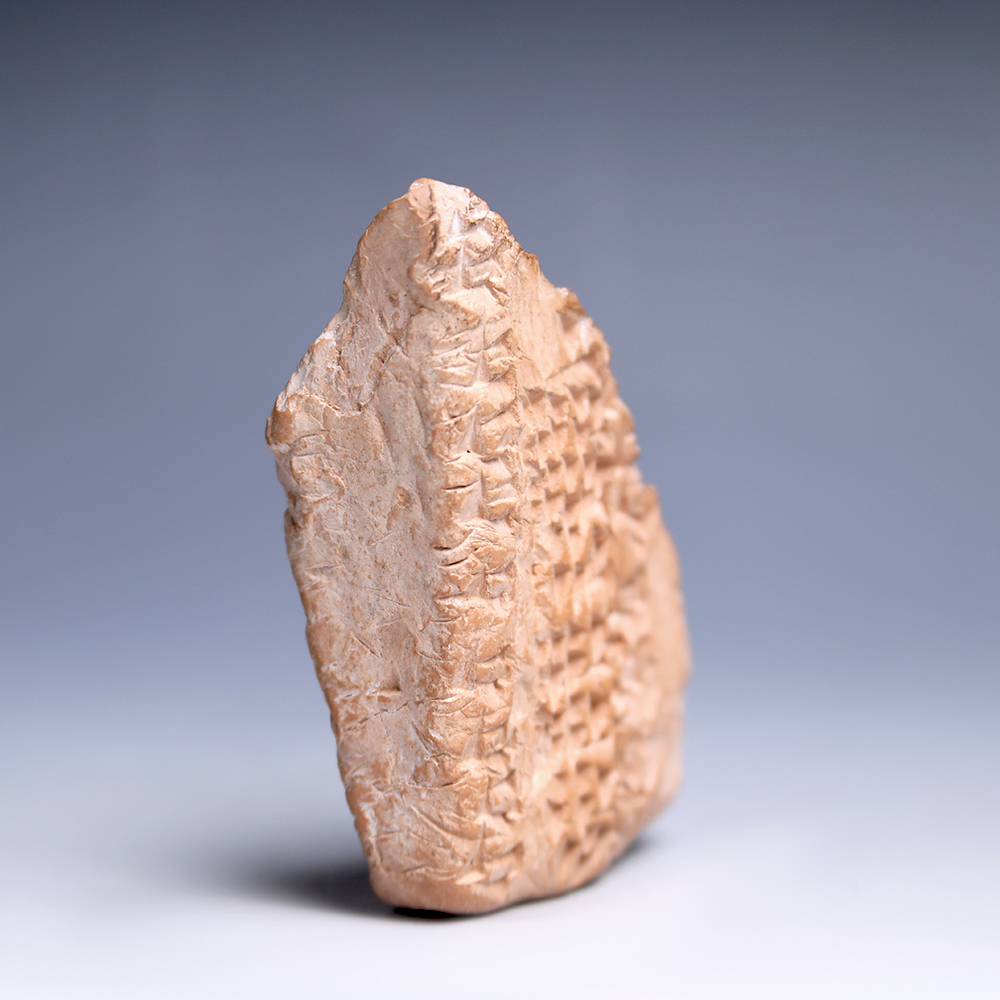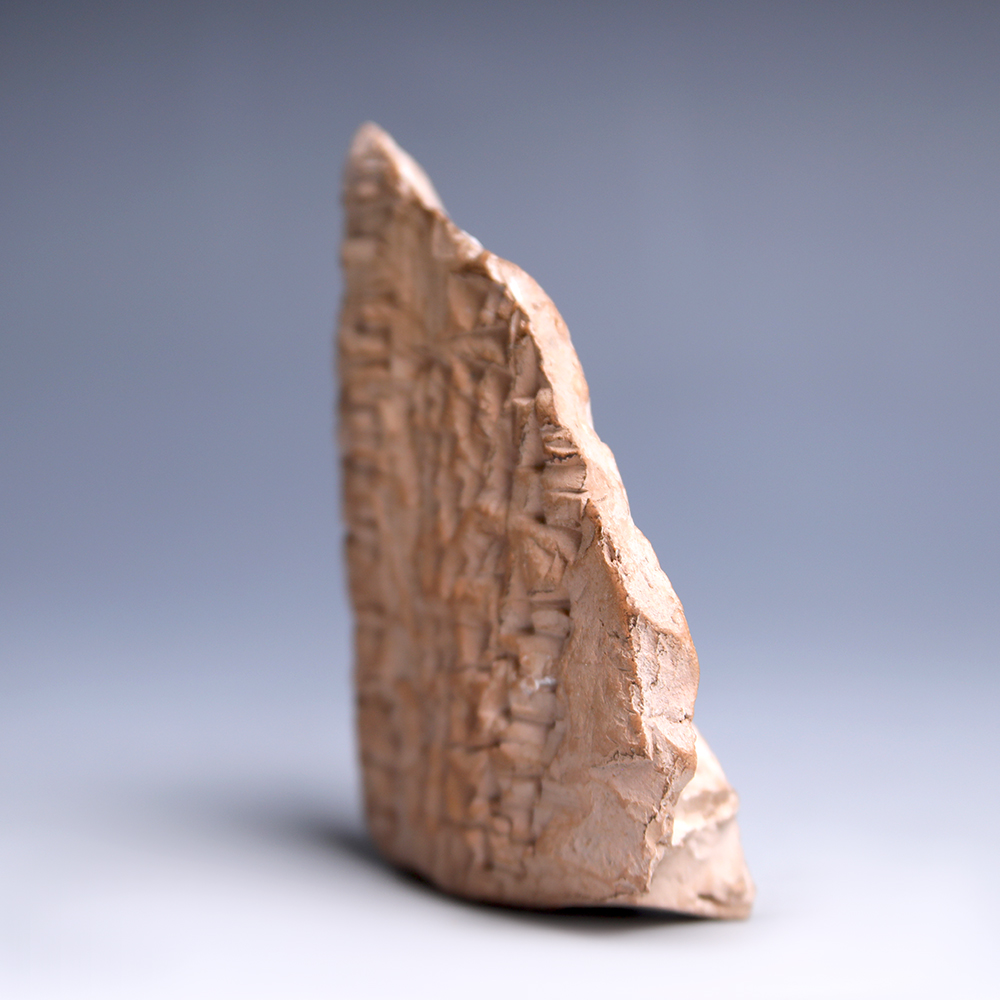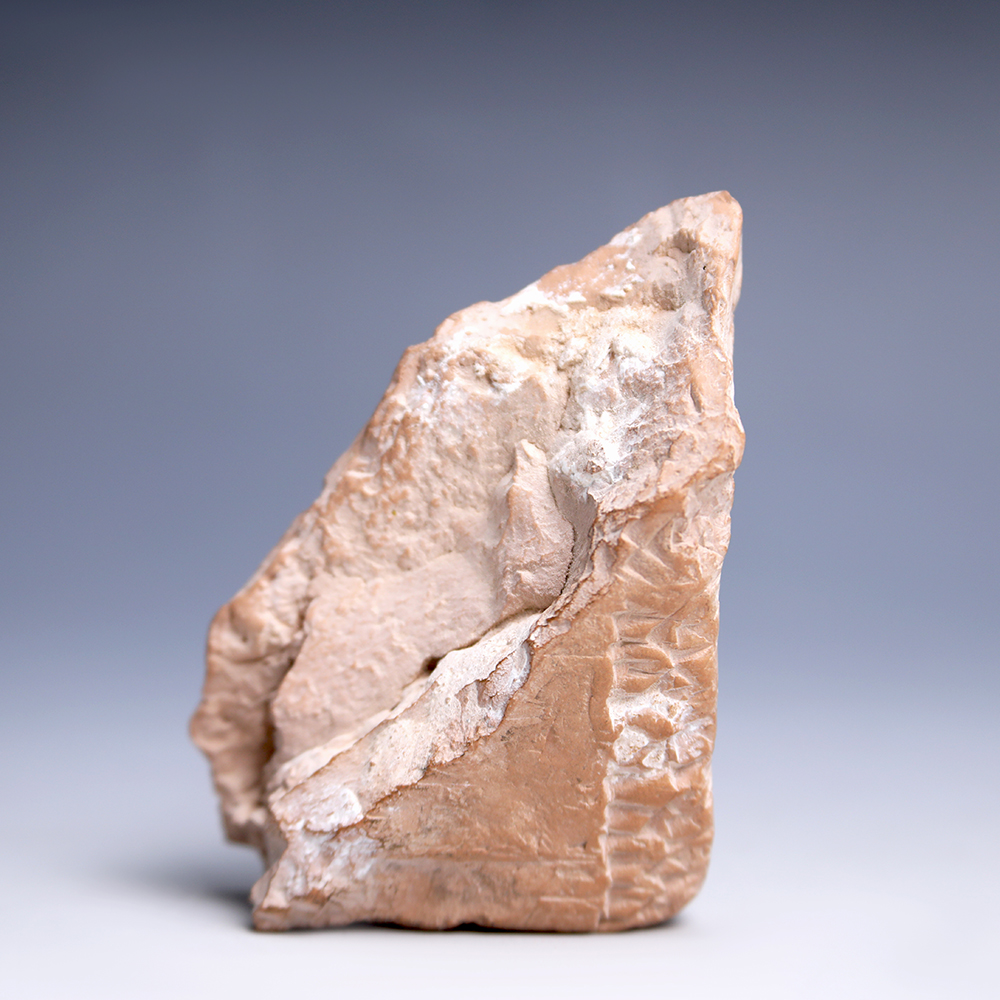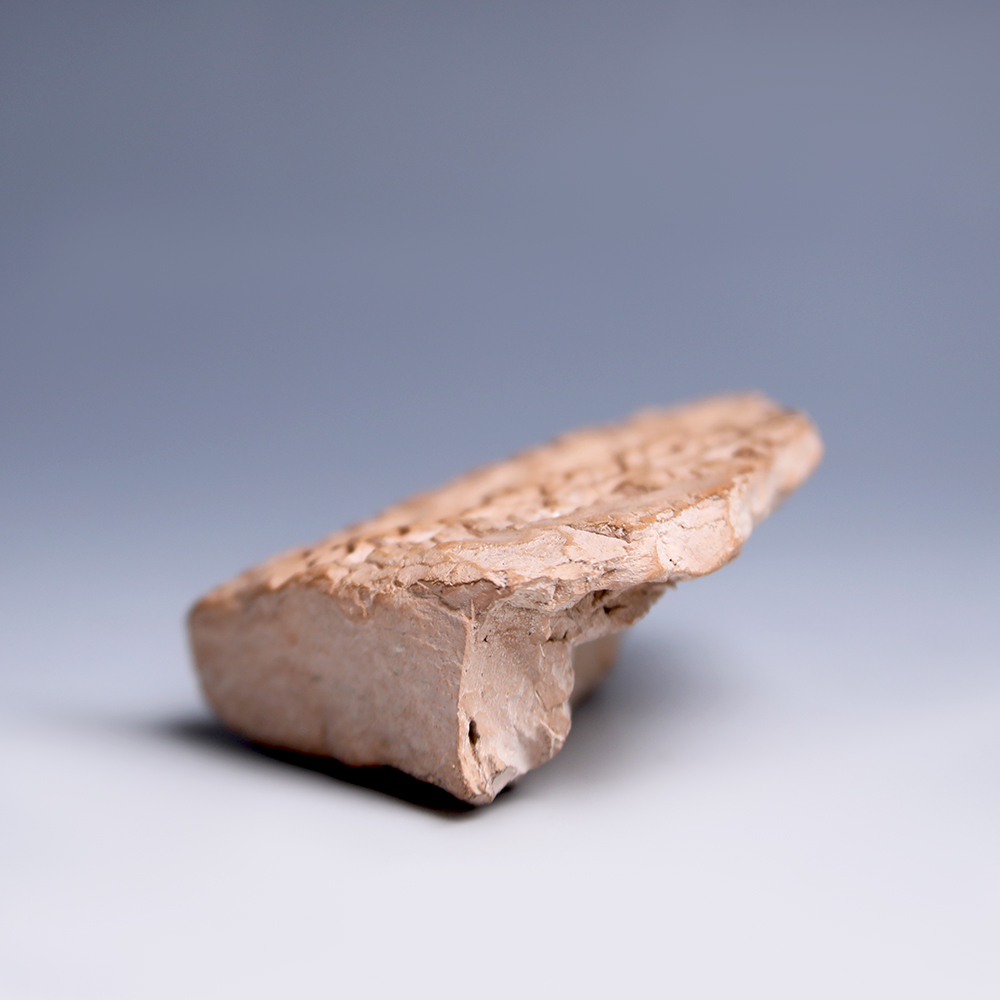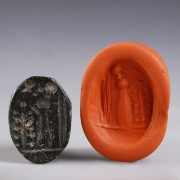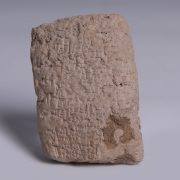Mesopotamia (Ancient Greek: Μεσοποταμία – “land between rivers”, the Tigris and the Euphrates) is a historical region in the Middle East which included most of today’s Iraq and parts of modern-day Iran, Syria and Turkey. The area, characterised by fertile lands, saw the rise of the first complex urban centre and is, consequently, often referred to as the “cradle of civilisation”. Historically important centres in Mesopotamia included Uruk, Ur, Nippur, Nineveh, and Babylon. With the development of complex social structures came the need to record, as we do today, such things as temple acquisitions, land transactions, financial loans, as well as their epic stories and personal letters. Cuneiform writing was one of the earliest forms of writing, first developed in Mesopotamia around 3000 BC by the Sumerians. It is instantly recognisable by the wedge-shaped marks, usually pressed into wet clay tablets using a blunt reed. Indeed, the name ‘cuneiform’ literally means “wedge-shaped”. Clay tablets, such as this example, would have then been dried, which allowed them to retain the inscriptions.
Mesopotamian Clay Fragment of a Cuneiform Administrative Tablet
$467.12
A fragment of a Mesopotamian clay administrative tablet from the Ur III period. The piece is carved onto the obverse and reverse with clear and defined cuneiform scripts arranged in straight lines.
Period: Ur III
Provenance: Ex. Professor Geoffrey Wilson (deceased) Warwickshire, 1960-70s.
Condition: Fragmented and in good condition.
SOLD
| Weight | 67.3 g |
|---|---|
| Dimensions | L 5.5 x H 7.5 cm |
| Culture | |
| Region | |
| Pottery and Porcelain |
